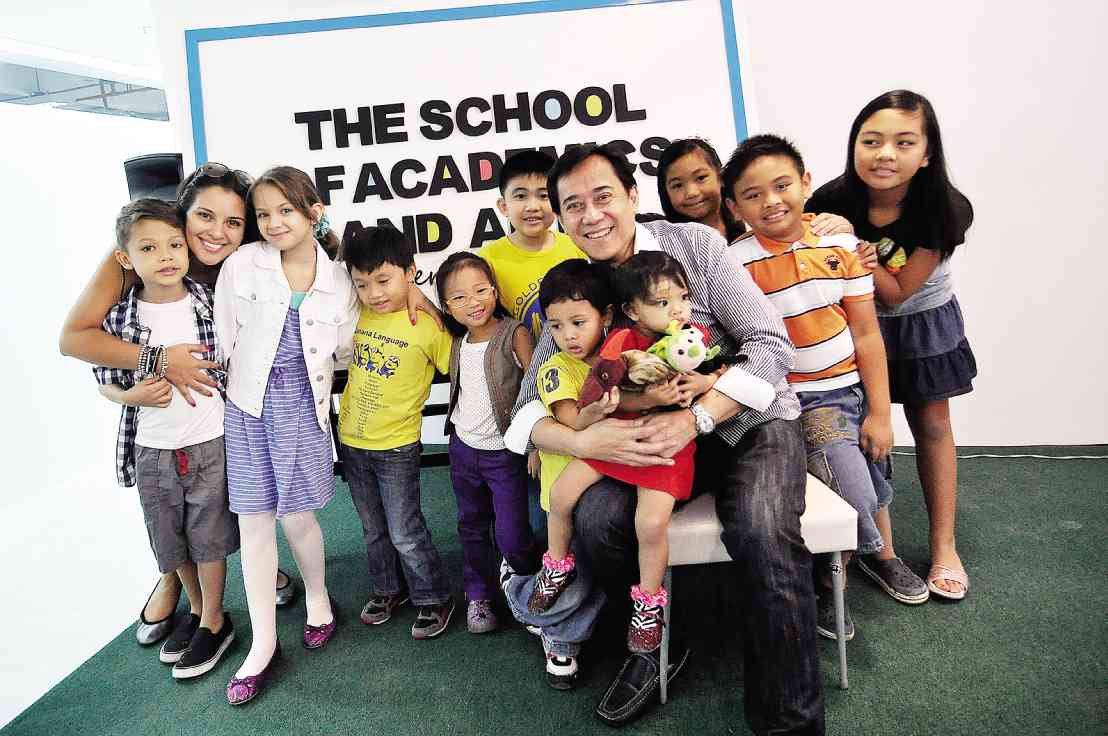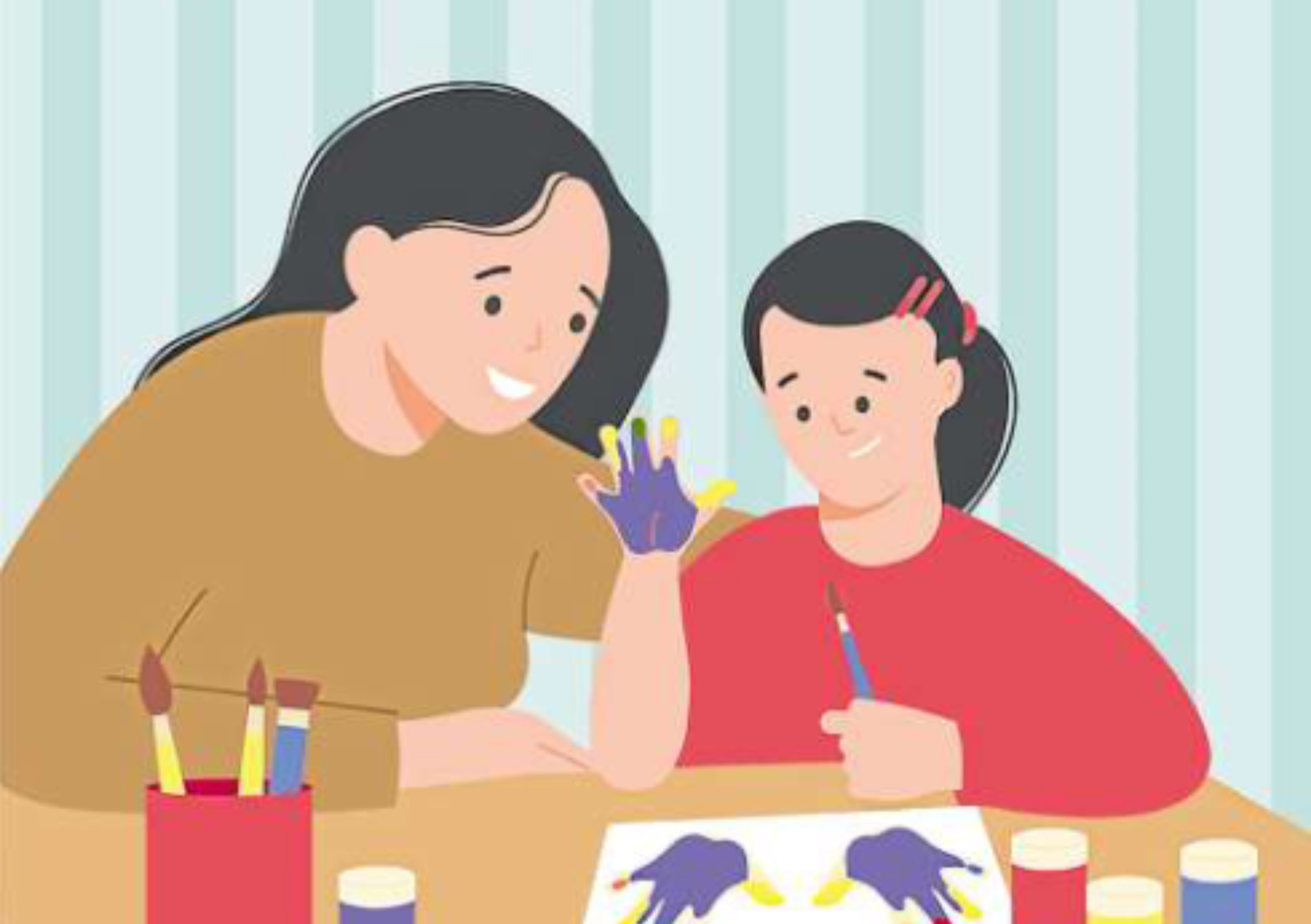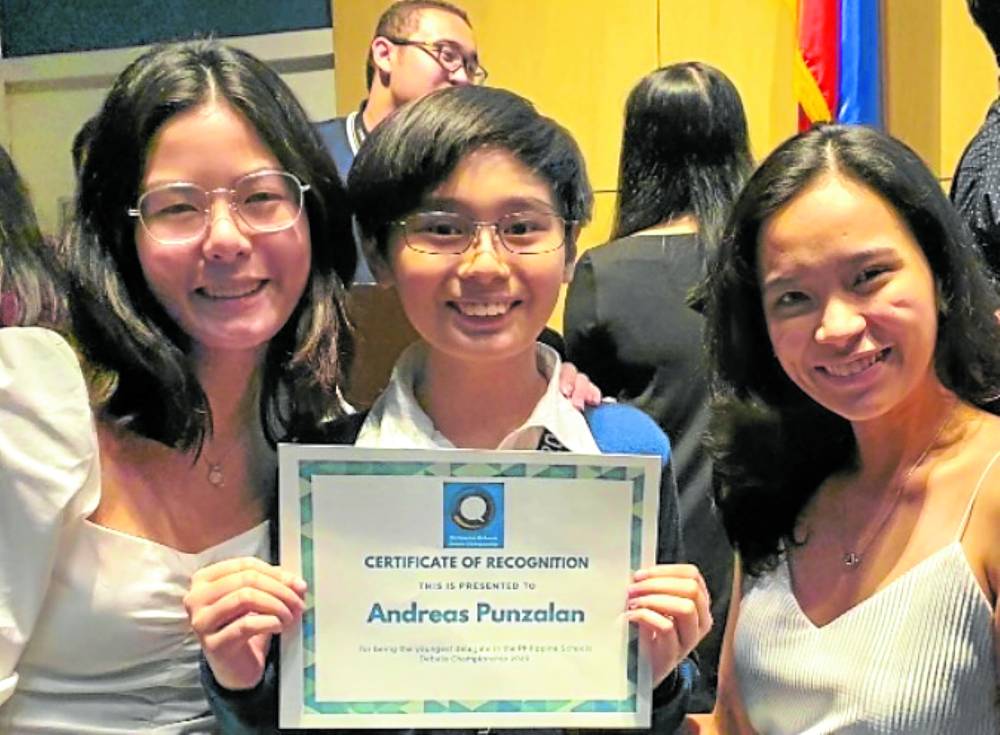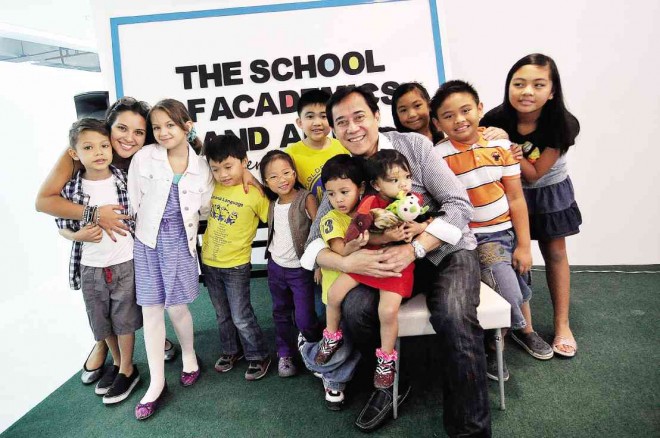
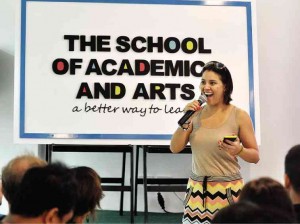
Stage actor, director and producer Audie Gemora has established an arts-integrated school, which he says specializes in “progressive schooling” and seeks to combine the analytical and creative sides of the student.
The School of Academics and Arts (TSAA) is housed in a building in Makati City for greater accessibility. It boasts of a progressive approach that integrates the arts in the curriculum.
“The popular thinking goes that children can develop only either the left (analytical) or the right (creative) side of the brain. But not both. We beg to disagree,” Gemora says.
TSAA’s partner is Evelyn de Guzman Hizon of UP Diliman; she specializes in child development and family life.
Aside from Gemora, members of the faculty include Emmy Cayabyab and Maria Alfreda Fernandez-Napala, a master’s degree holder in Educational Management from the University of Melbourne, who is also the principal.

Gemora discusses how TSAA started and how its curriculum works:
What made you establish an arts-integrated progressive school in the Philippines?
Years ago, a couple of parents approached me. Our kids were going to the same school, and they asked, “Are you happy with the school?” Ako naman absolutely no background in education, aside from the arts, so I said, “Yeah I’m quite happy naman.” But one of the parents said, “Why not put up our own school? Would you be interested to come with us and set up an arts program with the concept of a school that has the three A’s: academics, athletics and arts?”
And I thought that was a wonderful concept, so I joined them immediately. Something hit me—my God, I think this is the fulfillment of what wasn’t quite complete. Now we are finally going to put up a school that would allow kids not just to get through the normal academic way of learning, but also develop their creative side. And so, for the last six years, this concept has evolved, and this school is what came out of it.
Nontraditional
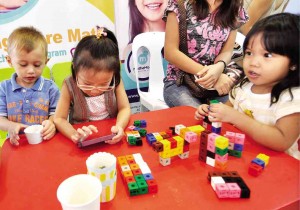
What is the primary concept of this school? How does it differ from traditional schools?
We are a progressive school; it is nontraditional. We will teach kids academics, and then some. We put in a progressive program for the arts, which summer programs never offer. And we cover all the five areas: literature, visual arts, music, drama and dance.
Some parents ask me if their kids will be qualified or ready by the time they go to the university, and I say, absolutely. We are DepEd registered and certified.
What we dream of here is that from preschool all the way up to high school, we’re going to create a progression. They will begin with little plays for theater and later on progress all the way up to high school where they learn Shakespeare, musical theater, how to create original music, Broadway. It’s the same thing with dance. It will begin with just simple movements, rhythm, and later move on to basic dances, ballet, jazz, hip-hop and so on.
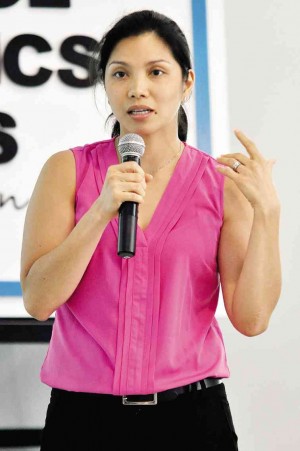
For visual arts, we could start with just doodling, later on painting, clay, sculpture, photography, filming.
For literature it could start with just reading books, storytelling, writing poems or stories, later on scripts.
Music, of course, rhythm muna, learning the basic tones, to teach the ear. Later on, teaching the child how to read notes as early as grade school, so whether they choose to be a musician or not, they are music literate, all the way up to when they can write their own compositions. By the time they reach high school they can already create fantastic pieces of work, aside from having a complete academic profile.
Can you explain further the meaning of arts integration in the curriculum?
We found teacher Cherry Napala, who was educated in Australia and knows extensively about arts integration, and so we did a lot of research and found out that a lot of Western schools are already using arts integration in their curriculum—using the arts to teach regular subjects. And when you think about it, it really makes perfect sense.

For example, can you imagine if we taught “Noli” and “Fili” dramatically? We do Ryan Cayabyab’s “Noli” and “Fili” musicals; those kids will have a more holistic learning experience about those stories. They’ll learn about history; they will find out what the people wore in those time periods, how they talked, how they moved at that time. The students will be very interested in them because we will be bringing it to life onstage. The possibilities are endless.
Evidence-, research-based
Teacher Cherry likes to talk about how we can teach the younger kids about the solar system… They can recreate the movement of the planets in the solar system through movements in the dance studio… The children will retain all this information better because we stimulate the analytical and creative sides of the brain.
Language studies that are taught in traditional schools can now be taught more creatively. It can be done in situationers, in which we can film students doing conversations, and so the kids can understand the subject better and more intimately. All of these activities and lessons are evidence- and research-based. How I wish there were a school like this when I was young. I am just so excited that on our first year, it’s really all finally happening.
Traditional schools are still using the same teaching methods used in the 19th century. We need to move on to the 21st.
TSAA’s new location is at 3615 SGC Building, Davila St., Makati City. It offers PlayKlub (1.8 years to 2.6 years), Nursery and K-12 programs. After-school academic programs include math, science, English, social studies, Filipino, and Mandarin. After-school arts programs include dance, ballet, voice, piano, violin and visual arts. Call 5428577 or 0925-5502766. Visit www.tsaa.com.ph. E-mail [email protected] or [email protected].

